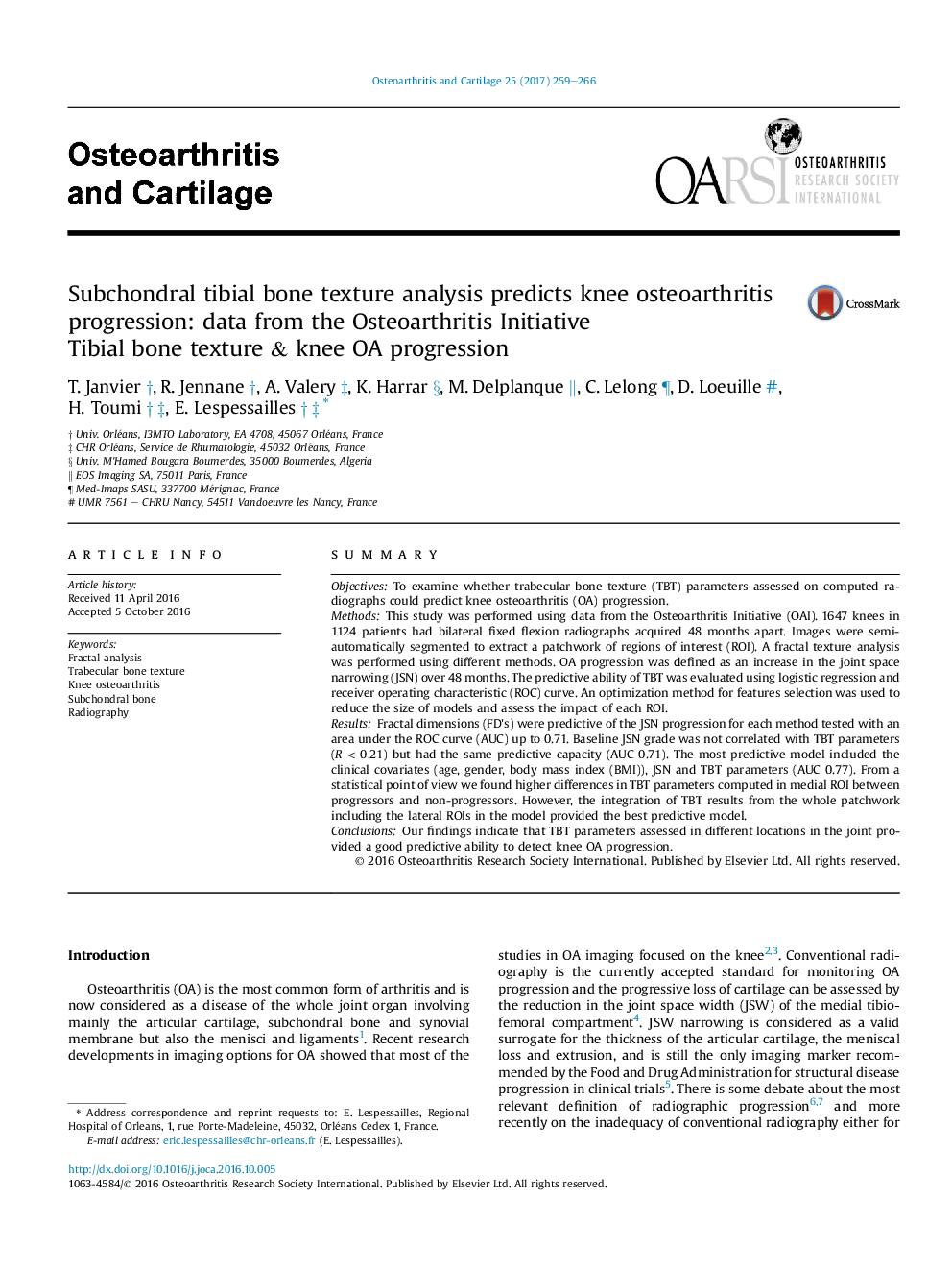| کد مقاله | کد نشریه | سال انتشار | مقاله انگلیسی | نسخه تمام متن |
|---|---|---|---|---|
| 5669472 | 1407968 | 2017 | 8 صفحه PDF | دانلود رایگان |

SummaryObjectivesTo examine whether trabecular bone texture (TBT) parameters assessed on computed radiographs could predict knee osteoarthritis (OA) progression.MethodsThis study was performed using data from the Osteoarthritis Initiative (OAI). 1647 knees in 1124 patients had bilateral fixed flexion radiographs acquired 48 months apart. Images were semi-automatically segmented to extract a patchwork of regions of interest (ROI). A fractal texture analysis was performed using different methods. OA progression was defined as an increase in the joint space narrowing (JSN) over 48 months. The predictive ability of TBT was evaluated using logistic regression and receiver operating characteristic (ROC) curve. An optimization method for features selection was used to reduce the size of models and assess the impact of each ROI.ResultsFractal dimensions (FD's) were predictive of the JSN progression for each method tested with an area under the ROC curve (AUC) up to 0.71. Baseline JSN grade was not correlated with TBT parameters (RÂ <Â 0.21) but had the same predictive capacity (AUC 0.71). The most predictive model included the clinical covariates (age, gender, body mass index (BMI)), JSN and TBT parameters (AUC 0.77). From a statistical point of view we found higher differences in TBT parameters computed in medial ROI between progressors and non-progressors. However, the integration of TBT results from the whole patchwork including the lateral ROIs in the model provided the best predictive model.ConclusionsOur findings indicate that TBT parameters assessed in different locations in the joint provided a good predictive ability to detect knee OA progression.
Journal: Osteoarthritis and Cartilage - Volume 25, Issue 2, February 2017, Pages 259-266